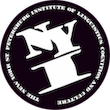Ling G / Cog C: Phonological knowledge: The linguistic content of phonemes and phonological features (Intermediate)
Since the publication of The Sound Pattern of English (Chomsky & Halle 1968), theories of phonology have been built from two interacting components: representations and the computational processes which operate over them. The phoneme is typically thought of as the basic representational unit in phonology, but what exactly is the phoneme, and what does it do? This class is appropriate for beginning students of phonology, but is not an introduction to phonology per se; it proposes an introduction and overview of phonemes and features in phonological thought since pre-generativism through the modern day. We begin with the origin of the phoneme in the thinking of Jan Baudouin de Courtenay and trace its development as a symbolic marker of contrast in structuralism, and trace its transformation into the distinctive features used in contemporary theories. As we examine the development of the phoneme and features over the last 150 years, we will see that their role as contrastive units has remained central to phonological theories, even as the nature and content of those features has been reconceptualized. Throughout our investigation, we will keep track of a couple of related threads: the role of contrast, and the relationship between phonological representations in the mind and phonetic substance in the physical world. Both of these threads have important consequences for the kinds of generalizations in linguistic data that theories can be used to make sense of, and the way phonological representations interact with computational processes (for example allophony).
Prerequisite: some very, very basic knowledge of what phonololgy is (even Intro to linguistics should be enough, but Intro to Phonology is even better)

